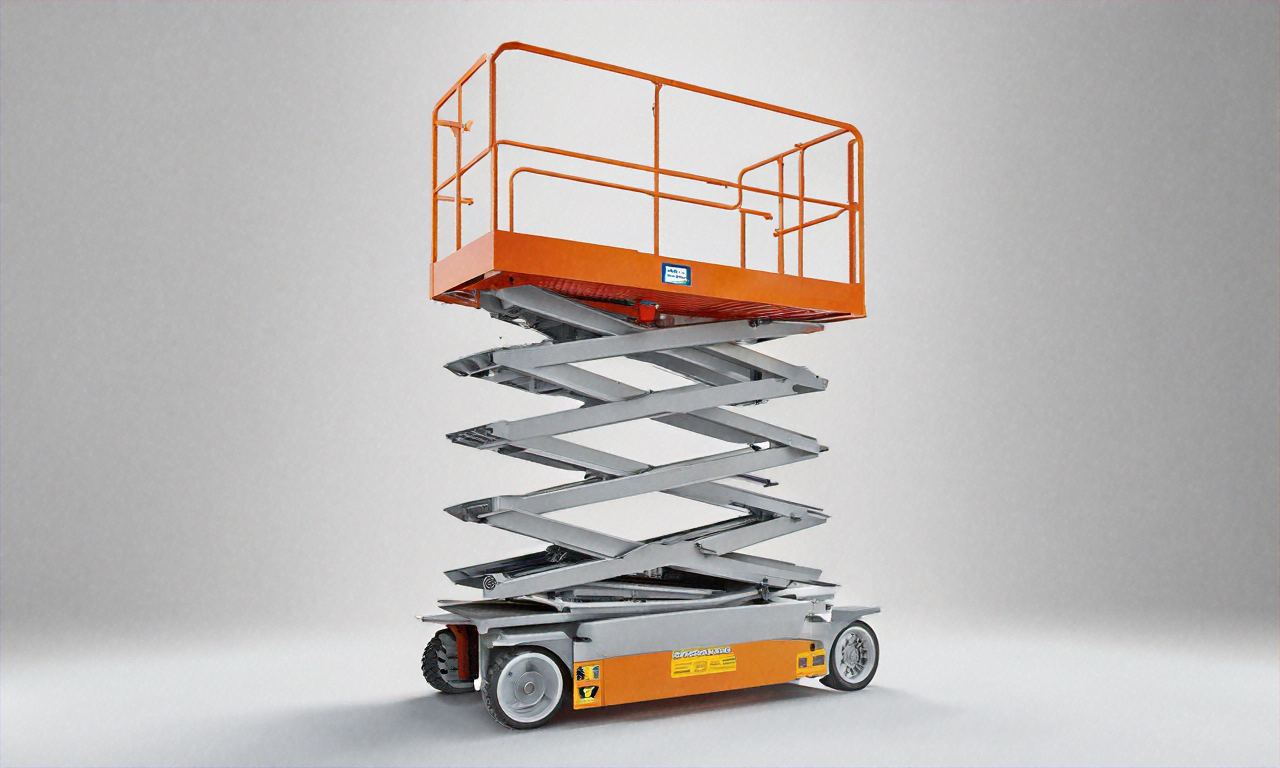Complete Guide to Scissor Lift Rentals in the UK
Scissor lifts are essential pieces of equipment for accessing elevated work areas safely and efficiently. Whether you're painting a warehouse ceiling, installing lighting fixtures, or conducting maintenance on building facades, understanding when and how to rent a scissor lift can make your project more productive and cost-effective. This comprehensive guide covers everything you need to know about scissor lift rentals, from identifying the right use cases to selecting appropriate equipment and ensuring safe operation on-site.

When to Rent a Scissor Lift: Common Use Cases and Job Types
Construction professionals, maintenance teams, and facility managers frequently rely on scissor lifts for various applications. Indoor projects such as warehouse maintenance, retail store renovations, and office building installations benefit significantly from electric scissor lifts due to their quiet operation and zero emissions. These lifts excel in environments where ceiling work, HVAC installations, or electrical repairs require stable, elevated platforms.
Outdoor construction projects often demand rough terrain scissor lifts that can navigate uneven surfaces whilst providing reliable access to building exteriors, signage installation, and structural maintenance. Tree surgeons, window cleaners, and painting contractors also find scissor lifts invaluable for reaching heights safely whilst maintaining productivity. Emergency repairs, such as streetlight maintenance or building inspections following storms, frequently require immediate access to scissor lift equipment through rental services.
Types of Scissor Lifts Available for Rent and How to Choose the Right One
Electric scissor lifts suit indoor applications perfectly, offering quiet operation with zero emissions and smooth controls ideal for delicate work environments. These units typically provide working heights between 20-50 feet and feature non-marking tyres that protect finished floors. Their compact design allows navigation through standard doorways and tight spaces.
Rough terrain scissor lifts feature robust construction with four-wheel drive capabilities and larger tyres designed for outdoor use on uneven surfaces. These diesel-powered units offer greater lifting capacity and extended reach, making them suitable for construction sites and outdoor maintenance projects.
Compact scissor lifts, often called micro scissors, provide access solutions in extremely confined spaces where traditional lifts cannot operate. These units typically reach heights of 12-20 feet whilst maintaining minimal footprint dimensions. When selecting equipment, consider your maximum working height requirements, ground conditions, indoor versus outdoor use, weight capacity needs, and site access restrictions.
What to Know Before Renting a Scissor Lift: Safety Training and Requirements
UK regulations require operators to receive appropriate training before using scissor lifts, though specific certification requirements vary depending on the lift type and application. The Health and Safety Executive (HSE) strongly recommends formal training through recognised providers, covering pre-use inspections, safe operating procedures, emergency protocols, and hazard recognition.
Most rental companies provide basic orientation sessions covering specific equipment features and safety protocols. However, comprehensive training should address fall protection requirements, ground conditions assessment, weather limitations, and proper use of harnesses and lanyards. Operators must understand weight distribution principles, stability factors, and emergency lowering procedures.
Site supervisors should establish exclusion zones around operating scissor lifts and ensure all personnel understand communication protocols. Regular safety briefings help maintain awareness of changing site conditions that might affect lift operation, including wind speeds, ground stability, and overhead hazards.
Scissor Lift Rental Costs and What’s Typically Included
Scissor lift rental costs vary significantly based on equipment type, rental duration, and geographical location. Understanding typical pricing structures helps budget effectively for your projects whilst ensuring you receive appropriate equipment and support services.
| Scissor Lift Type | Daily Rate | Weekly Rate | Monthly Rate | Included Services |
|---|---|---|---|---|
| Electric Compact (20ft) | £80-120 | £300-450 | £800-1200 | Basic training, delivery/collection |
| Electric Standard (32ft) | £120-180 | £450-650 | £1200-1800 | Insurance options, maintenance support |
| Rough Terrain (40ft) | £180-250 | £650-900 | £1800-2500 | Operator manuals, safety equipment |
| Large Rough Terrain (50ft+) | £250-350 | £900-1300 | £2500-3500 | Emergency support, replacement guarantee |
Prices, rates, or cost estimates mentioned in this article are based on the latest available information but may change over time. Independent research is advised before making financial decisions.
Most rental packages include basic equipment insurance, operator manuals, and emergency contact support. Additional costs may include delivery charges based on distance, damage waiver insurance, extended rental periods, and specialized attachments or accessories. Fuel costs for diesel units typically remain the renter’s responsibility.
Tips for Operating and Maintaining a Rented Scissor Lift On-Site
Successful scissor lift operation begins with thorough pre-use inspections covering hydraulic fluid levels, battery charge status, tyre condition, and safety system functionality. Document any existing damage or concerns before commencing work to avoid disputes upon equipment return.
Establish daily maintenance routines including cleaning debris from platforms, checking emergency stop functions, and monitoring battery levels for electric units. Position equipment on level, stable ground whenever possible, and use outriggers or stabilizers as recommended by manufacturer specifications.
Weather conditions significantly impact safe operation, particularly wind speeds that can affect platform stability. Establish maximum wind speed limits and monitor conditions throughout the workday. Store equipment securely during adverse weather and ensure batteries remain charged in cold conditions.
Maintain clear communication protocols between platform operators and ground personnel, using established hand signals or radio communication systems. Regular position changes help prevent operator fatigue, whilst proper tool organization on platforms reduces dropped object hazards.
Scissor lift rentals provide flexible, cost-effective solutions for accessing elevated work areas across numerous industries and applications. Success depends upon selecting appropriate equipment for specific job requirements, ensuring proper operator training and safety protocols, and maintaining equipment according to manufacturer recommendations. Understanding rental costs and included services helps optimize project budgets whilst ensuring access to reliable, well-maintained equipment that meets UK safety standards and regulatory requirements.




